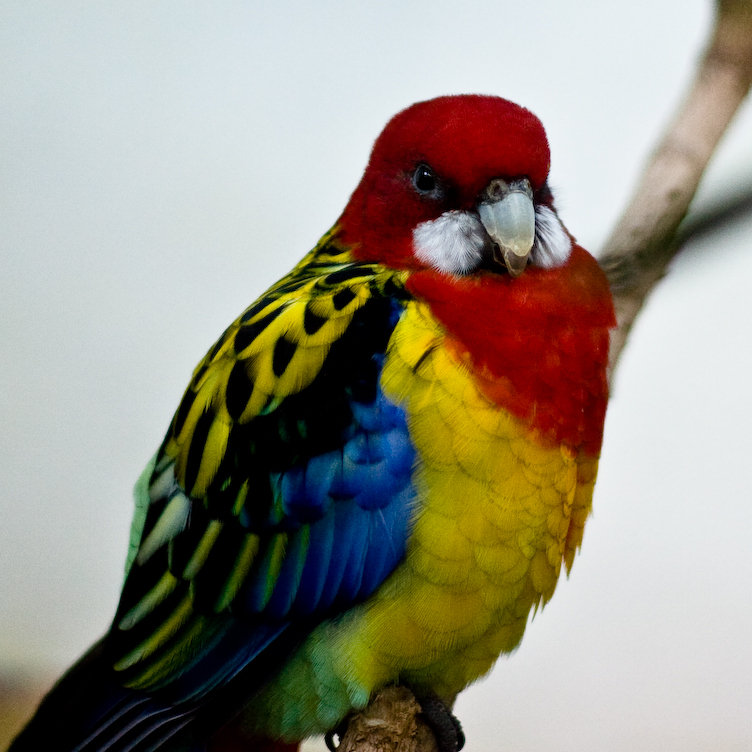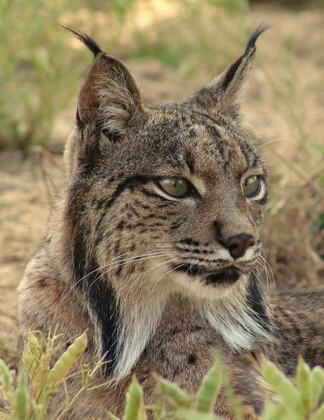|
Parrots Of New Zealand
New Zealand is geographically isolated, and originally lacked any mammalian predators, hence parrots evolved to fill habitats from the ground dwelling kakapo to the alpine dwelling kea as well as a variety of forest species. The arrival of Māori, then European settlers with their attendant animals, habitat destruction and even deliberate targeting, has resulted in their numbers plummeting. Today one species is on the brink of extinction and three other species range from Vulnerable to Critically Endangered, all impacted by invasive species. Further parrot species were not introduced by acclimatisation societies, but occasional releases, both deliberate and accidental, have resulted in self-sustaining populations of some Australian species. New Zealand was identified among the highest priority countries for parrot conservation in the world, due to its parrot diversity, endemism, threats, and having more threatened parrot species than expected. Endemic species Apart from ... [...More Info...] [...Related Items...] OR: [Wikipedia] [Google] [Baidu] |
Reischek's Parakeet
Reischek's parakeet (''Cyanoramphus hochstetteri'') is a small green parrot confined to Antipodes Island, one of New Zealand’s subantarctic islands, which it shares with a congener, the larger Antipodes parakeet. Taxonomy The common name commemorates pioneering naturalist and collector Andreas Reischek, who collected specimens of the parrot in 1888 and who named it ''Platycercus hochstetteri'' for the son of his friend, Austrian geologist Ferdinand von Hochstetter, who made a geological survey of New Zealand. Reischek’s parakeet was previously considered to be a subspecies of the red-crowned parakeet ''C. novaezelandiae'', which it resembles in appearance, but was later lumped with the Macquarie parakeet from Macquarie Island in a 2001 paper by Wee Ming Boon and others following an examination of the molecular systematics of the genus which found that many of the red-crowned parakeet subspecies should be elevated to full species.Boon, Wee Ming; Kearvell, Jonathan C.; Daugher ... [...More Info...] [...Related Items...] OR: [Wikipedia] [Google] [Baidu] |
Crimson Rosella
The crimson rosella (''Platycercus elegans'') is a parrot native to eastern and south eastern Australia which has been introduced to New Zealand and Norfolk Island. It is commonly found in, but not restricted to, mountain forests and gardens. The species as it now stands has subsumed two former separate species, the yellow rosella and the Adelaide rosella. Molecular studies show one of the three red-coloured races, ''P. e. nigrescens'', is genetically more distinct. Taxonomy The crimson rosella was described by Johann Friedrich Gmelin in the 13th edition of ''Systema Naturae'' in 1788 as ''Psittacus elegans''. The binomial name had been used by Clusius to describe the hawk-headed parrot in 1605, however this predates the start of Linnean taxonomy. The crimson rosella had been described and named by John Latham in 1781 as the "Beautiful Lory", from a specimen in the collection of Sir Joseph Banks, and then as the "Pennantian Parrot" in 1787 in honour of Thomas Pennant. Howeve ... [...More Info...] [...Related Items...] OR: [Wikipedia] [Google] [Baidu] |
Sulphur-crested Cockatoo
The sulphur-crested cockatoo (''Cacatua galerita'') is a relatively large white cockatoo found in wooded habitats in Australia, New Guinea, and some of the islands of Indonesia. They can be locally very numerous, leading to them sometimes being considered pests. A highly intelligent bird, they are well known in aviculture, although they can be demanding pets. Distribution In Australia, sulphur-crested cockatoos can be found widely in the north and east, ranging from the Kimberley to as far south as Tasmania, but avoiding arid inland areas with few trees. They are numerous in suburban habitats in cities such as Adelaide, Melbourne, Canberra, Sydney and Brisbane. Except for highland areas, they occur throughout most of New Guinea and on nearby smaller islands such as Waigeo, Misool and Aru, and various islands in the Cenderawasih Bay and Milne Bay. There are four recognised subspecies: Introduced species Within Australia, sulphur-crested cockatoos of the nominate race have also ... [...More Info...] [...Related Items...] OR: [Wikipedia] [Google] [Baidu] |
Eastern Rosella
The eastern rosella (''Platycercus eximius'') is a rosella native to southeastern Australia and Tasmania. It has been introduced to New Zealand where feral populations are found in the North Island (notably in the northern half of the island, Taranaki, Waikato and in the Hutt Valley) and in the hills around Dunedin in the South Island. Taxonomy The eastern rosella was named by George Shaw in 1792. It is sometimes considered a subspecies of the pale-headed rosella (''P. adscitus''). The term 'white-cheeked rosella' has been used for a species or superspecies combining the pale-headed and eastern forms. Hybrids of the two taxa have been recorded where their ranges meet in northeastern New South Wales and southeastern Queensland. However, a mitochondrial study published in 2017 found that the eastern rosella was the earlier offshoot of the lineage that split into the pale-headed and northern rosellas, and that nonsister taxa were hence able to hybridise. Three subspecies of easte ... [...More Info...] [...Related Items...] OR: [Wikipedia] [Google] [Baidu] |
Norfolk Kaka
Norfolk () is a ceremonial and non-metropolitan county in East Anglia in England. It borders Lincolnshire to the north-west, Cambridgeshire to the west and south-west, and Suffolk to the south. Its northern and eastern boundaries are the North Sea, with The Wash to the north-west. The county town is the city of Norwich. With an area of and a population of 859,400, Norfolk is a largely rural county with a population density of 401 per square mile (155 per km2). Of the county's population, 40% live in four major built up areas: Norwich (213,000), Great Yarmouth (63,000), King's Lynn (46,000) and Thetford (25,000). The Broads is a network of rivers and lakes in the east of the county, extending south into Suffolk. The area is protected by the Broads Authority and has similar status to a national park. History The area that was to become Norfolk was settled in pre-Roman times, (there were Palaeolithic settlers as early as 950,000 years ago) with camps along the higher lan ... [...More Info...] [...Related Items...] OR: [Wikipedia] [Google] [Baidu] |
Campbell Island, New Zealand
Campbell Island / Motu Ihupuku is an uninhabited subantarctic island of New Zealand, and the main island of the Campbell Island group. It covers of the group's , and is surrounded by numerous stacks, rocks and islets like Dent Island, Folly Island (or Folly Islands), Isle de Jeanette-Marie, and Jacquemart Island, the latter being the southernmost extremity of New Zealand. The island is mountainous, rising to over in the south. A long fiord, Perseverance Harbour, nearly bisects it, opening out to sea on the east coast. The island is listed with the New Zealand Outlying Islands. The island is an immediate part of New Zealand, but not part of any region or district, but instead ''Area Outside Territorial Authority'', like all other outlying islands, other than the Solander Islands. It is the closest piece of land to the antipodal point of the United Kingdom, and Ireland, meaning that the furthest away city is Limerick, Ireland. Campbell Island is a UNESCO World Heritage Site. ... [...More Info...] [...Related Items...] OR: [Wikipedia] [Google] [Baidu] |
Nestor Productus
Nestor may refer to: * Nestor (mythology), King of Pylos in Greek mythology Arts and entertainment * "Nestor" (''Ulysses'' episode) an episode in James Joyce's novel ''Ulysses'' * Nestor Studios, first-ever motion picture studio in Hollywood, Los Angeles * ''Nestor, the Long-Eared Christmas Donkey'', a Christmas television program Geography * Nestor, San Diego, a neighborhood of San Diego, California * Mount Nestor (Antarctica), in the Achaean Range of Antarctica * Mount Nestor (Alberta), a mountain in Alberta, Canada People * Nestor (surname), anglicised form of Mac an Adhastair, an Irish family * Nestor (given name), a name of Greek origin, from Greek mythology Science and technology * ''Nestor'' (genus), a genus of parrots * NESTOR Project, an international scientific collaboration for the deployment of a neutrino telescope * NESTOR (encryption), a family of voice encryption devices used by the United States during the Vietnam War era * 659 Nestor, an asteroid Ship ... [...More Info...] [...Related Items...] OR: [Wikipedia] [Google] [Baidu] |
Vulnerable Species
A vulnerable species is a species which has been Conservation status, categorized by the International Union for Conservation of Nature as being threatened species, threatened with extinction unless the circumstances that are threatened species, threatening its survival and reproduction improve. Vulnerability is mainly caused by habitat loss or destruction of the species' home. Vulnerable habitat or species are monitored and can become increasingly threatened. Some species listed as "vulnerable" may be common in captivity (animal), captivity, an example being the military macaw. There are currently 5196 animals and 6789 plants classified as Vulnerable, compared with 1998 levels of 2815 and 3222, respectively. Practices such as cryoconservation of animal genetic resources have been enforced in efforts to conserve vulnerable breeds of livestock specifically. Criteria The International Union for Conservation of Nature uses several criteria to enter species in this category. A tax ... [...More Info...] [...Related Items...] OR: [Wikipedia] [Google] [Baidu] |
Endangered Species (IUCN Status)
Endangered species as classified by the International Union for Conservation of Nature (IUCN), are species which have been categorized as very likely to become extinct in their known native ranges in the near future. On the IUCN Red List, endangered is the second most severe conservation status for wild populations in the IUCN's schema after critically endangered. In 2012, the IUCN Red List featured 3,079 animal and 2,655 plant species as endangered worldwide. The figures for 1998 were 1,102 and 1,197 respectively. IUCN Red List The IUCN Red List is a list of species which have been assessed according to a system of assigning a global conservation status. According to the latest system used by the IUCN, a species can be "Data Deficient" (DD) species – species for which more data and assessment is required before their situation may be determined – as well species comprehensively assessed by the IUCN's species assessment process. A species can be "Near ... [...More Info...] [...Related Items...] OR: [Wikipedia] [Google] [Baidu] |
Kākā
The New Zealand kākā (''Nestor meridionalis'') is a large species of parrot of the family Nestoridae found in New Zealand, New Zealand's native forests. The species is often known by the abbreviated name kākā, although it shares this name with the Holocene extinction, recently extinct Norfolk kākā and Chatham kākā. Two subspecies of New Zealand kākā are recognised. It is endangered and has disappeared from much of its former range, though the re-introduction of North Island kākā at Zealandia (wildlife sanctuary), Zealandia in Wellington has led to an increasing population of the birds across the city. Taxonomy and naming The New Zealand kākā was described by German naturalist Johann Friedrich Gmelin in 1788. There are two subspecies, the North Island kākā, ''Nestor meridionalis septentrionalis'', and the South Island kākā, ''N. m. meridionalis,'' although more recent research has ruled out allopatric subspeciation. The Māori language name ''kākā'' means "parr ... [...More Info...] [...Related Items...] OR: [Wikipedia] [Google] [Baidu] |







